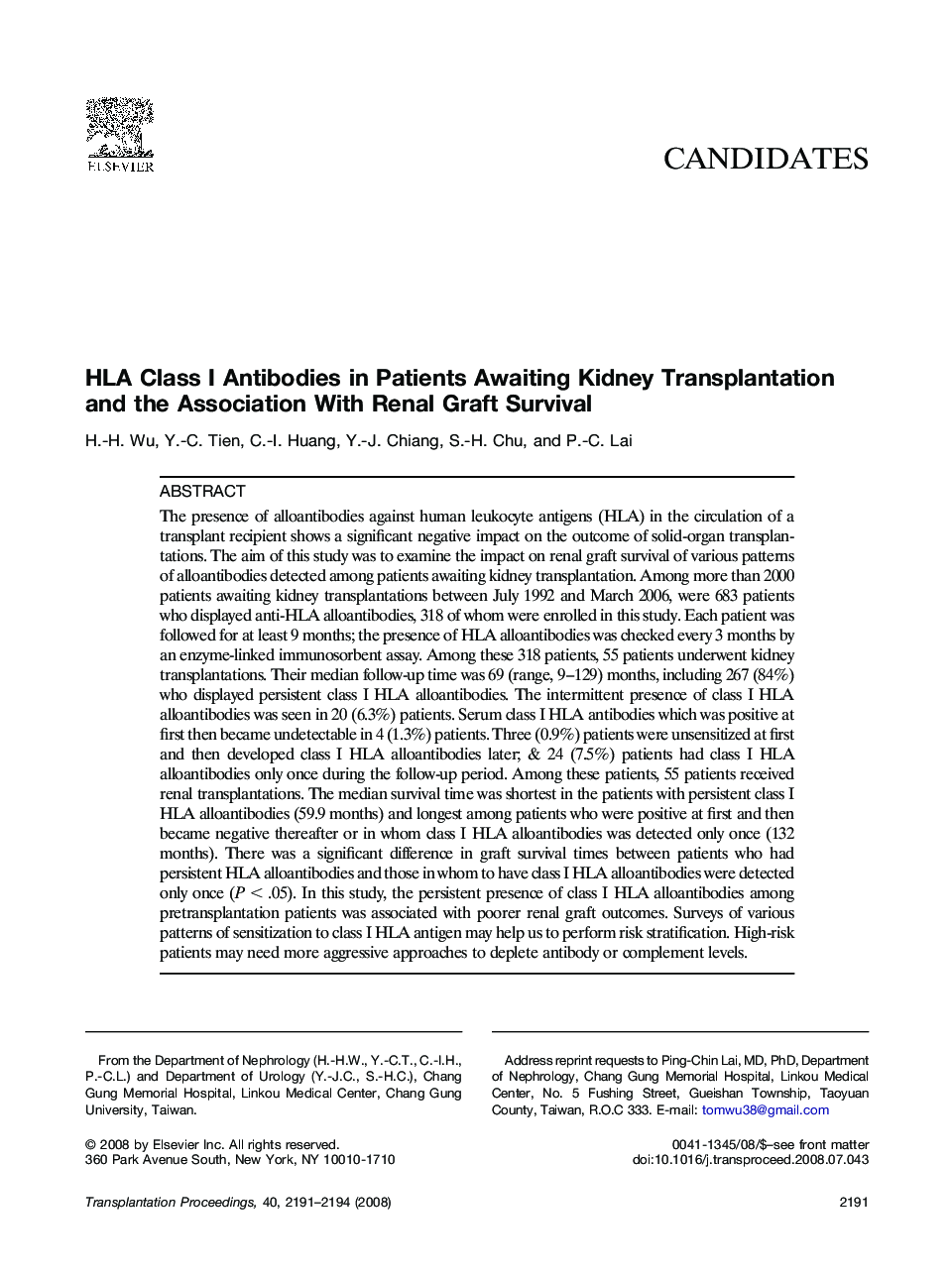| Article ID | Journal | Published Year | Pages | File Type |
|---|---|---|---|---|
| 4262468 | Transplantation Proceedings | 2008 | 4 Pages |
The presence of alloantibodies against human leukocyte antigens (HLA) in the circulation of a transplant recipient shows a significant negative impact on the outcome of solid-organ transplantations. The aim of this study was to examine the impact on renal graft survival of various patterns of alloantibodies detected among patients awaiting kidney transplantation. Among more than 2000 patients awaiting kidney transplantations between July 1992 and March 2006, were 683 patients who displayed anti-HLA alloantibodies, 318 of whom were enrolled in this study. Each patient was followed for at least 9 months; the presence of HLA alloantibodies was checked every 3 months by an enzyme-linked immunosorbent assay. Among these 318 patients, 55 patients underwent kidney transplantations. Their median follow-up time was 69 (range, 9–129) months, including 267 (84%) who displayed persistent class I HLA alloantibodies. The intermittent presence of class I HLA alloantibodies was seen in 20 (6.3%) patients. Serum class I HLA antibodies which was positive at first then became undetectable in 4 (1.3%) patients. Three (0.9%) patients were unsensitized at first and then developed class I HLA alloantibodies later; & 24 (7.5%) patients had class I HLA alloantibodies only once during the follow-up period. Among these patients, 55 patients received renal transplantations. The median survival time was shortest in the patients with persistent class I HLA alloantibodies (59.9 months) and longest among patients who were positive at first and then became negative thereafter or in whom class I HLA alloantibodies was detected only once (132 months). There was a significant difference in graft survival times between patients who had persistent HLA alloantibodies and those in whom to have class I HLA alloantibodies were detected only once (P < .05). In this study, the persistent presence of class I HLA alloantibodies among pretransplantation patients was associated with poorer renal graft outcomes. Surveys of various patterns of sensitization to class I HLA antigen may help us to perform risk stratification. High-risk patients may need more aggressive approaches to deplete antibody or complement levels.
